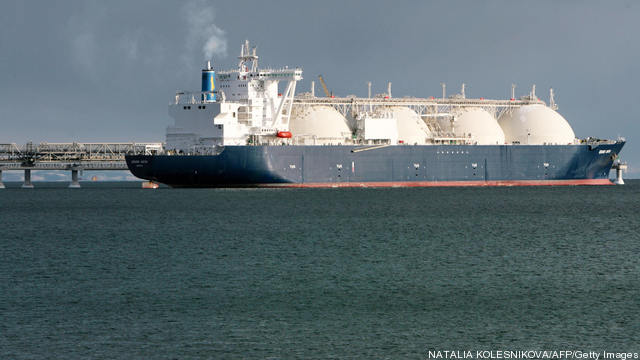
Producers want to export natural gas equaling 20% of current US consumption to overseas markets where the gas sells for up to five times the US price.
US officials and experts are struggling to figure out whether allowing all those exports will hike prices for US consumers.
Currently, the only US plant capable of liquefying natural gas for export as LNG is a small 1969-vintage facility in Alaska. All other US LNG terminals were built for imports, on the assumption the US would need foreign gas. Technology allowing retrieval of shale gas has reversed that assumption, and at least five terminals want to build gasification plants to enable exports.
Deputy Assistant Energy Secretary Christopher Smith told the Senate Energy & Natural Resources Committee on November 8 that two studies are ongoing to assess the economic effects of allowing more exports, and officials can’t answer key questions about the exports’ effects until the studies are finished next year.
How Much Is Too Much?
Chief among those questions, said Senator John Barrasso (R-WY): At what export level is DOE going to “draw the line” and say the US domestic price would go too high? Added Senators Ron Wyden (D-OR) and Bob Corker (R-TN): Will exports make natural gas like the oil market, exposing US consumers to world price volatility?
New production from natural gas shales has given the US so much gas that the domestic price regularly lingers below $4 per thousand cubic feet, while gas exported into Japan has topped $15/Mcf, said Wyden.
DOE has authorized five permits for LNG export totaling the equivalent of 6.6 billion cubic feet per day, or 10% of US daily usage, to countries with which the US has bilateral Free Trade Agreements, Smith said. He noted that FTA export authorization is essentially automatic, but DOE has more discretion for non-FTA exports.
DOE has permitted up to 2.2 billion cubic feet per day of non-FTA exports from Cheniere Energy’s Sabine Pass terminal, and pending applications from other terminals would bring the total non-FTA export potential to 6.6. billion cubic feet per day, the same as authorized for FTA nation exports – totaling 20% of US consumption. Read more on this issue: USAEE Notebook: DOE Weighing LNG Export Price Effect.
Faced with those applications, and rumors of more, Smith said DOE has commissioned the economic studies to assess the cumulative impact of exporting that much gas.
The studies are looking at prices, but also the US balance of trade, jobs in gas and related industries, local economies around terminals, environmental sustainability, US energy security, and knock-on effects for chemical and other industries that use natural gas as fuel and feedstock.
Rice University’s Kenneth Medlock told the committee with the ample US shale supply, it’s unlikely the exports now being considered can push up prices much.
Bringing It Home
Andrew Slaughter of Shell agreed the exports being considered will not be large enough to change the dynamics of the US market. He said confidence in plentiful supply here “offers potential for no less than a rebirth of the American manufacturing sector.”
He said Shell may build a new chemical manufacturing facility in the Marcellus Shale region, and is eying a gas-to-liquids plant to produce clean diesel and aviation fuel. These would mean thousands of US jobs, he said.
With low gas prices, analysts over the past two years have said producers are waiting to drill for more. Senator John Hoeven (R-ND) said in North Dakota’s oil shales, co-produced natural gas is being burned off, or “flared,” because it isn’t worth building pipelines to gather it and transport it to markets.
But Senators expressed wariness about the new supply predictions. As recently as two years ago, Wyden pointed out, federal regulators permitted an LNG import terminal at Coos Bay over Oregon’s objections, citing national needs. Now, he said, the terminal owner wants to convert it into an export terminal and export more gas than it was authorized to import.
Jim Collins of Hamilton, Ohio’s municipal utility, speaking for the American Public Gas Association, said DOE should limit exports “so that we may realistically pursue the greater goal of energy independence.” Affordable natural gas is vital to both consumers and industry, he said, and the US should “prioritize” its uses in the national interest.
Committee Chairman Jeff Bingaman (D-NM) asked whether US producers might gear up to export to foreign countries, only to find out other nations had discovered their own shale resources. Medlock called that scenario “a real risk.”
In an analysis issued this week, Kevin Book of Clearview Energy Partners says high international prices have already prompted non-US gas producers to announce they’re building some 9 billion cubic feet per day of new LNG export capacity.
Photo Caption: A liquified natural gas (LNG) tanker sits near an LNG plant on Sakhalin island outside the town Korsakov on February 16, 2009. Russia on February 18 is set to begin production of liquefied natural gas on Sakhalin Island, greatly increasing its role as an energy exporter in the Asia-Pacific region.
